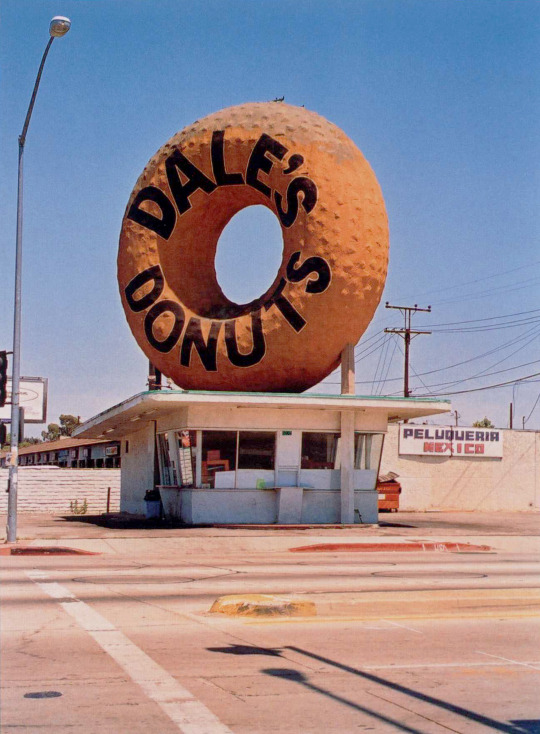#Programmatic
Explore tagged Tumblr posts
Text
Canada's StackAdapt snaps up $235M for its AI-based programmatic platform
While the U.S. and Canada duke it out over tariffs between the two countries, a tech company based out of Toronto is announcing a major round of funding led by a homegrown VC. StackAdapt, a programmatic advertising startup, says that it has raised $235 million in equity funding, with Teachers’ Venture Growth (TVG) — the investment arm of the Ontario Teachers’ Pension Plan — leading the growth…
1 note
·
View note
Text
Trade Desk: The Backbone of Digital Ad Campaigns
TTD = Trade Desk is a company that helps assist those who seek to display their ads online. It acts as a hub, where advertisers can submit their creative and from where it is distributed to relevant sites having ad spaces. It is a platform on which we can cover wide range of sites, it works on the principle of Demand-Side i.e. when a site shows that a particular placement online is available for…
#ads#advertising#digital#digitalfirst#digitalmarketing#googleads#marketer#marketing#programmatic#smartmarketing#strategy
0 notes
Text
Stay ahead with the top AI trends in programmatic advertising. Discover how automation, targeting, and analytics are evolving with AI advancements.
0 notes
Text

Milk bottle store. Cedar St., Spokane, Washington. John Margolies, photographer, 1980.
LOC
#programmatic architecture#roadside architecture#whimsy#milk bottle#spokane#john margolies#1980#1980s#color photography#1k
5K notes
·
View notes
Text
Balancing The Strengths And Limitations Of LLMs For Marketers
Digital advertising has evolved from a simple “business of words” to a sophisticated realm of digital technologies. Dominating this digital revolution is Artificial Intelligence (AI), particularly the emergence of Large Language Models (LLMs), which have become instrumental in the realm of…

View On WordPress
0 notes
Text
How to Use Programmatic Advertising to Generate B2B Leads
In today's digitally-driven world, traditional advertising methods are no longer enough to capture the attention of potential B2B leads. As businesses seek innovative strategies for B2B lead generation, programmatic advertising has emerged as a game-changer.
In this comprehensive guide, we will delve into what programmatic advertising is, explore why it's an ideal fit for B2B lead generation, and highlight the invaluable benefits of partnering with Intent Amplify in your quest for B2B success.
What is Programmatic Advertising?
Programmatic advertising is a data-driven, automated approach to buying and placing ads online. Unlike traditional advertising, which relies on manual negotiations and purchases, programmatic advertising uses algorithms and real-time data to determine when and where to display ads to specific target audiences. This precision ensures that your message reaches the right people at the right time, maximizing the efficiency and effectiveness of your advertising campaigns.
Why is Programmatic Advertising a Good Fit for B2B Lead Generation?
B2B lead generation hinges on identifying and engaging with decision-makers in other businesses. Programmatic advertising is uniquely suited to this task because it allows you to:
1. Identify Your Target Audience:
The first step in any successful B2B lead generation campaign is understanding your ideal customer. Who are they? Where do they spend their time online? What content do they consume? Intent Amplify specializes in helping you identify and target high-intent leads based on their online behavior. This data-driven approach ensures that your message reaches those most likely to convert.
2. Choose Your Programmatic Advertising Platform:
The programmatic advertising landscape offers a variety of platforms, each with its own strengths and specialties. Intent Amplify can assist you in selecting the perfect platform for your unique needs, considering factors such as your budget, targeting requirements, and campaign objectives. With our guidance, you'll make the right choice from the get-go.
3. Set Your Campaign Goals:
What do you want to achieve with your B2B lead generation campaign? Whether it's increasing brand awareness, generating leads, or driving sales, Intent Amplify can help you set realistic and achievable goals. We understand the nuances of B2B marketing, and our expertise ensures your campaign is aligned with your desired outcomes.
4. Create Your Ad Creatives:
Compelling ad creatives are essential to capturing your audience's attention. Intent Amplify's team of experts can help you craft ad creatives that resonate with your target audience. From high-quality visuals to concise, persuasive copy, we know how to make your message stand out.
5. Set Your Budget:
Budgeting is a critical aspect of any advertising campaign. Programmatic advertising can be remarkably cost-effective, but it's crucial to set a budget that aligns with your campaign goals. Intent Amplify will work with you to establish a budget that ensures maximum impact without breaking the bank.
6. Launch Your Campaign and Track Your Results:
Once your campaign is live, the journey is far from over. You need to monitor your results meticulously and make adjustments as needed. Metrics like impressions, clicks, leads, and cost per lead provide invaluable insights. Intent Amplify offers robust reporting and analytics tools, enabling you to track your campaign's progress and make data-driven decisions.
In the ever-evolving landscape of B2B lead generation, programmatic advertising stands out as a powerhouse strategy. By targeting the right audience, crafting effective ad creatives, and continuously tracking results, you can unlock the full potential of programmatic advertising. With Intent Amplify by your side, you gain a trusted partner that excels in:
Identifying and targeting high-intent leads
Selecting the optimal programmatic advertising platform
Establishing realistic and achievable campaign goals
Creating captivating ad creatives
Setting a budget tailored to your objectives
Monitoring and optimizing campaign performance
Intent Amplify is your key to B2B lead generation success. Throughout this guide, we've demonstrated how our expertise can empower your campaigns. To learn more about how Intent Amplify can revolutionize your B2B lead generation efforts, or to schedule a consultation, contact us today. Your journey to B2B success begins with us – let's amplify your intent together.
0 notes
Text
20 Best App Marketing Strategies To Drive Growth

As smartphones gain widespread popularity, the app market becomes increasingly competitive. To overcome this challenge, many app marketing services are innovating and applying various strategies to boost app growth. This blog post outlines and elaborates on the top 20 app marketing strategies in response to this evolving landscape.
1. User acquisition campaigns
User acquisition campaigns, often called customer campaigns, are digital initiatives designed to acquire high-quality users. These campaigns follow a user acquisition funnel, as illustrated in the image, with the primary objectives of:
Attracting leads.
Cultivating these leads until they are ready for sales.
Converting leads into customers.
Implementing strategies to retain and engage users. User acquisition holds paramount importance for businesses, offering several key advantages:
Expanding User Base: It facilitates growth by increasing the app or website user base, potentially leading to higher customer lifetime value (LTV).
Revenue Boost: Effective user acquisition can drive revenue, which can be reinvested in branding and business expansion.
Enhanced Trust: A growing user base instills trust and credibility in your business.
2. Performance marketing, a popular app marketing strategy, guarantees results through campaigns where advertisers pay for specific actions like app installs, ad clicks, lead generation, conversions, and registrations. There are six critical steps to successful performance marketing.

How does performance marketing work?
Performance marketing operates by creating goal-specific ad campaigns across various channels like apps, websites, and social media. Ads begin performing upon successful placement, and payment is based on chosen metrics using payment models such as:
CPA (Cost Per Action): Payment for specific actions like clicks, installs, registrations, or sign-ups.
CPM (Cost Per Mille): Payment for every thousand ad impressions.
CPC (Cost Per Click): Payment for each ad click.
CPL (Cost Per Lead): Payment for acquiring leads through actions like form submissions or newsletter sign-ups.
Benefits of performance marketing
rapid business scaling, guaranteed app growth, budget-centric advertising, and high-quality traffic and conversions from diverse sources.
3. Programmatic advertising
Programmatic advertising is a marketing method that uses unique algorithms and technology to automate buying and selling of ad space. It even facilitates ad placement optimization while eliminating manual negotiation challenges. Steps involved in programmatic advertising
Data gathering: The initial stage in programmatic advertising is to compile data about prospective clients, such as demographic details, web browsing patterns, and past purchases. With the aid of this information, the appropriate audience can be targeted.
Real-time header auction: Using real-time bidding, you hold an auction for your desired ad inventory.
Unified auction: The DSP employs special algorithms to gather direct purchasers, header auction bidders, and non-guaranteed bidders in one location, enabling the winning bid to purchase the ad space while giving direct purchasers priority.
Ad creation: To make advertising, you can use pre-made themes, images, videos, and text.
Ad delivery: The target audience sees the winning advertisement. To provide the optimum success, the DSP continuously optimizes the campaign by modifying bids and targeting.
4. App Store Optimization
App Store Optimization (ASO) is a strategy to enhance an app's visibility in the Apple App Store and Google Play Store, organically improving its rankings and visibility.
ASO Ranking Factors:
Keywords
Keywords are users' search terms. Ranking high requires selecting relevant keywords and integrating them into on-page metadata. For iOS, include keywords in the app title, subtitle, and a 100-character keyword list. For Android, use them in the app name, long and short descriptions.
Pro Tips for Keywords:
Use relevant keywords only.
Opt for either singular or plural forms, not both.
Avoid 'app' or competitor names.
App name
The choice of your app's name is a pivotal app marketing strategy as it shapes users' perception. Opt for a name that clearly represents your app rather than just aiming for flair or catchiness. Both the Google Play Store and Apple App Store permit up to 30 characters for the app name or title.
Moreover, in the App Store, you can include a subtitle of up to 30 characters. The Google Play Store allows a more generous limit of 50 characters for app names. To make the most of this character allowance, ensure your app's name is descriptive and informative. Examples of ASO-optimized app names include Spotify - Music and Podcasts, Google Maps - Transit & Food, and Weather Live - Local Forecast.
App description Your app description should be user-focused. Write a crisp and compelling narrative describing your app's usage and benefits, encouraging the user to download it immediately. As touched on earlier, include relevant keywords, but avoid keyword stuffing. Also, it is essential to keep the description up-to-date with app updates and release notes so the user learns about the current version of your app.
The Play Store allows you to enter long and short descriptions. The long description can be up to 4000 characters, whereas the short description can be up to 80 characters. On the other hand, the App Store only supports long descriptions of up to 4000 characters with no special characters allowed. Visual elements
The visual elements of your app listing are the app icon, screenshots, and videos. Let's talk about each element one by one.
App icon: The app icon is an essential branding element, and the first thing users notice. Moreover, the icon is shown on different app pages – app listing, category page, editor's choice, etc. Therefore, you need to design one that is simple, relevant, and easy to comprehend what the app is about.
Screenshots: Screenshots give users a sneak peek into your app and influence their decision to install the app to a certain extent. Make sure that the screenshots you include are striking and represent the features or functionalities of your app well.
Preview video: You can even include your app's preview video by keeping it short yet descriptive enough to convey the app's features and benefits.
Reviews and ratings
Bad ratings impact the ASO ranking of your app, and these are the important app marketing strategies. Moreover, since they appear in the app listings, they affect the users' decision to download your app. Positive app reviews and ratings can always work in your favor; it is a given. So try to collect positive reviews from your existing users, especially for the latest version of your app. Reviews work like word of mouth for potential users.
Localization
One more thing you can do is localize the screenshots and other preview content according to the geo-locations. It helps you capture local audiences and connect with them much better.
User experience
Several UX factors, like crashes, session lengths, deletions, retention, etc., determine the ASO ranking. All these aspects indicate whether the app offers a positive experience to the users. If not, users might uninstall the app or leave negative reviews, which negatively impacts the ASO ranking.
Promotional text
This field is specific to the Apple App Store. You can add text about upcoming updates and events to your app. Promotional text can be up to 170 characters in length and can be updated multiple times. However, it does not impact the ranking. You can rather use it to promote app features.
Benefits of ASO
Less acquisition cost as ASO is all about organic app growth.
Keyword-based marketing strategy for high conversion.
Improved app ranking resulting in increased visibility.
Increased app revenue through contribution to monetization strategies like in-app purchases, in-app advertising, etc. 5. Connected TV advertising The placement of television ecosystems with internet connections, such as smart TVs, game consoles, and streaming devices like the Amazon Fire TV, Apple TV, and Roku, is known as connected TV advertising, or CTV.
Advertisements for connected TV can be interactive, display, or video ads. Then, to display their advertisements on the proper CTV channels, advertisers work with CTV advertising platforms like GreedyGame, The Trade Desk, SpotX, or LiveRamp. The target audience sees the advertisement after it is posted, and they can view it while streaming their preferred TV series and movies. The advertisement is presented indistinguishably from the content, guaranteeing visitors an unobtrusive experience. See the illustration below to better understand how CTV advertising functions:
Benefits of CTV advertising:
Easy access to excessive, high-quality ad inventory.
Smart and effective audience targeting.
Measurement of ad performance in real-time.
6. Referral marketing
Referral marketing, a proactive form of word-of-mouth promotion, incentivizes people to use your app, giving you control. Both existing and potential customers are rewarded in referral programs, benefiting both parties and enhancing your app marketing strategy.
7. Apple Search Ads
Apple Search Ads (ASA) is an iOS-specific strategy allowing app owners to bid on top-searched keywords. Winning bids place your app at the forefront of search results, making it an effective tool for mobile app promotion. ASA offers two plans, Basic and Advanced, with varying tools, controls, and budgets.
8. Google App Campaign
Google App Campaign (formerly Universal App Campaign) runs promotions across Google platforms, including Search, YouTube, and Google Play. It covers app installs, engagement, and pre-registration, with conversion tracking for key metrics like cost-per-install, cost-per-action, or cost-per-pre-registration, vital for your app marketing strategy. 9. Social media ads The increasing popularity of social media channels has made them a potent app marketing strategy. Mobile app promotions on social media follow two main approaches: Organic and Paid. Organic engagement necessitates establishing a social media presence, targeting your desired audience, and sharing regular, meaningful, and well-organized content to promote your app. In contrast, the paid method involves app install promotions, where targeted advertisements are used to drive app installations among your audience. This method is a valuable app marketing strategy with the potential for significant results. Platforms like Facebook and Instagram offer app install marketing, directing viewers to your App Store or Play Store listing upon clicking the ad's call-to-action (CTA). While not all apps may find success with social media ads, thorough research can help you determine your app's specific requirements and tailor your promotion strategy accordingly.
10. Content marketing
Content marketing aims to create and distribute valuable, relevant, and consistent content to attract and retain a specific target audience, ultimately driving profitable customer action. Instead of directly promoting a product or service, it focuses on educating and engaging customers.
Benefits of content marketing include:
Higher Audience Engagement: Valuable content fosters stronger and quicker relationships with the audience.
Increased Brand Visibility: Effective content strategies boost brand visibility and position your brand as an industry thought leader.
Improved SEO: Quality content enhances search engine rankings, improving discoverability.
More Leads and Conversions: Various content formats (images, videos, text, podcasts) educate customers and simplify audience targeting.
Better Customer Loyalty: Consistent, informative content builds trust and enhances customer loyalty.
Higher Revenue: Content marketing attracts and retains customers, potentially leading to increased revenue over time.
11. Email marketing
Email marketing, a facet of digital marketing, involves sending promotional messages or ads directly to a group via email. Its objectives include raising brand awareness, driving sales, and fostering customer loyalty.
Benefits of email marketing encompass:
Cost and Time Efficiency: It offers a budget-friendly and time-saving approach to attract prospects with effective strategies.
Targeted Reach: Precisely target potential leads, ensuring your message reaches the right audience.
Measurable Results: Track campaign success through metrics like click-through rates (CTRs), conversions, and inquiries.
Enhanced Engagement: Email facilitates customer engagement, relationship-building, and loyalty.
Personalization: Customize emails with recipient-specific details (name, location) for a more impactful message.
Improved Lead Generation: Email campaigns capture quality leads, nurturing them through the sales funnel for increased conversions and sales. 12. Paid advertising Paid advertising is a digital advertising approach where brands bid in real-time to secure ad slots, displaying ads across various formats like search engine ads, PPC ads, app store ads, banners, videos, and native ads.
Benefits of paid advertising include:
Targeted Reach: Precisely reach the desired audience based on demographics, interests, and location for improved conversions.
Immediate Results: Unlike organic marketing, paid advertising yields rapid outcomes within hours or days.
Measurable Results: It provides data-driven insights and metrics, facilitating campaign performance assessment.
Cost-Effectiveness: Compared to traditional methods like TV, radio, or print ads, paid advertising is often more cost-effective.
Increased Brand Awareness: Paid advertising enhances brand visibility and positioning, establishing your business as an industry leader.
13. User onboarding
User onboarding involves guiding new users to understand your app's value. This process can encompass live training, webinars, demos, and success stories to educate users about the app's features and unique selling points. The ultimate goal is to transform casual app visitors into proficient, engaged users.
Benefits of user onboarding include:
Increased User Retention: Onboarding aids users in grasping the app's functionality, enhancing their ability to use it effectively and thus promoting user retention.
Enhanced User Experience: Onboarding delivers a seamless, intuitive, and personalized experience, fostering trust and improving overall user satisfaction.
Higher Conversion Rates: By educating users on app usage, onboarding can boost conversion rates, driving sales, sign-ups, and other desired actions.
Improved Feedback: Onboarding facilitates user feedback and inquiries, making it easier to identify pain points and enhance the overall user experience.
Elevated User Satisfaction: Empowering users to maximize app potential leads to greater satisfaction and an improved overall user experience.
Increased User Engagement: Understanding the app's features through onboarding results in higher engagement and greater app usage. 14. Featured apps The Featured sections in the App Store and Google Play Store are where the app stores recommend your apps to the users. However, getting featured in this section is not a piece of cake. Some critical criteria must be met to feature on the app stores, which is why it is a lesser-known app marketing strategy.
Some common criteria an app must have:
A flawless UI and UX.
Localization according to geographical location, culture, etc.
Outstanding performance.
15. Word of mouth A straightforward approach to app promotion involves leveraging your friends and family network. Word of mouth functions as an app marketing strategy by identifying potential users interested in your app's offerings. For example, if five friends install your app, and they, in turn, inform five more people each, a cascading word-of-mouth effect spreads the word about your app to a substantial audience without cost.
Why word of mouth works:
Trust plays a pivotal role in the success of this app marketing strategy. According to a study, 88% of individuals consider word of mouth from acquaintances influential in their purchase decisions. Positive recommendations from friends or family carry weight, leading to increased adoption. In an era of easy access to information, such endorsements are particularly effective. Consider how you have relied on product reviews and ratings before installing an app to appreciate the potential of word of mouth. 16. SEO-optimized content An indirect app marketing strategy worth noting is the use of an SEO-optimized website. There are three primary reasons why having a search engine-optimized website benefits your app:
Organic Reach: SEO optimization boosts your website's search engine ranking, increasing organic traffic. More traffic means a larger audience for your app marketing efforts.
Exposure: When users search online, your website can appear in search results, introducing your app as a solution. User-intent-based searches on the web can lead many users to discover your app.
Legitimacy: A website signals that your app is legitimate. Your website should feature comprehensive information about your app to convince users of its authenticity.
How to optimize your website for SEO:
Collect user data and generate user behavior reports to understand engagement metrics like session duration and bounce rate. Analyze this data to identify high-performing pages and make improvements.
Conduct thorough keyword research, including long-tail keywords that reflect user intent. Create content and pages tailored to these keywords.
Invest in content marketing, particularly long-form content, which tends to rank higher than shorter content.
Focus on both on-page and off-page SEO. On-page optimization involves meta tags, headings, and URLs, while off-page SEO includes activities like link building, social sharing, and influencer marketing.
Ensure your website is mobile-friendly in design and responsiveness, optimizing it for mobile devices.
Improve page loading speed to enhance the user experience.
17. Public Relations (PR)
A Public Relations (PR) campaign aims to bolster a business's brand image, facilitating extensive outreach to potential customers, competitors, and investors.
How to execute a PR campaign:
There are various approaches to running a PR campaign:
Issue a press release to announce your app's launch.
Host a launch party and invite media and influencers.
Seek coverage in newspapers and relevant blogs.
Write guest posts for reputable blogging platforms to enhance your visibility.
Benefits of PR:
PR campaigns offer several advantages as an app marketing strategy:
Creates Wide Awareness: PR campaigns, particularly for pre-launch promotions, expose your app to potential customers, significantly increasing visibility. Additionally, PR mentions can boost your Google ranking.
Expands Investor Reach: A well-crafted PR campaign can help you connect with more investors, potentially securing additional funding for your app business.
18. Influencer Marketing
Influencer marketing has proven invaluable for countless brands seeking to reach their target audience. Identifying the most suitable influencers and partnering with them to promote your products or services can be a highly effective app marketing strategy.
Here are some popular influencer marketing platforms:
PulpKey
Qoruz
Blogmint
Grin
Additionally, here are other influencer marketing solutions:
Klout
Buzzsumo
Clarity
Conducting searches on social media platforms like Instagram, Twitter, YouTube, and LinkedIn.
Partnering with influencers who have the right audience can significantly enhance your app's visibility and engagement. 19. Quora Marketing
App marketing through Quora is an often overlooked yet highly beneficial strategy. With over 300 million users on Quora as of 2022, the platform offers substantial exposure potential for your app. Here are some tips for leveraging Quora effectively:
Appoint a reputable individual, such as the CEO or Product Manager, to respond to questions.
Identify topics closely related to your app and actively answer questions within those categories.
Target questions that are popular but have few answers, as this increases your chances of gaining visibility.
Structure your answers in a clear and readable format, ensuring they address the topic comprehensively.
If you already have relevant content on your app or blog, repurpose it to provide thorough answers on Quora.
20. In-store advertising
This approach may be most effective for certain app categories. For instance, if your app is related to retail and has physical stores, traditional advertising methods like pamphlets and banners can be utilized. To enhance this app marketing strategy, you can offer special discounts and incentives to users who download the app, creating a mutually beneficial scenario.
These are some of the most sought-after app promotion techniques. However, if you're interested in exploring additional app marketing strategies, consider engaging with an app promotion platform or user acquisition platform. On these platforms, you can specify campaign details such as goals, budget, and targeting, and the platform will manage the rest of the process.
1 note
·
View note
Text
Why Startups Need to Add Programmatic Advertising to Their Marketing Basket? Why MUST HAVE?

In today's pretty aggressive digital landscape, startups ought to constantly innovate and discover new avenues to gain an aggressive aspect. One such street that has gained enormous traction in current years is programmatic advertising and marketing. In this comprehensive guide, we can delve into the sector of programmatic advertising, exploring why it's crucial for startups, its fee-effectiveness, boom capacity, and its ability to generate a higher go back on funding (ROI). Additionally, we'll show off real-life achievement memories of agencies, which includes startups and industry giants, which have leveraged programmatic advertising and marketing to achieve notable consequences.
Why is Programmatic Advertising Essential for Startups?
Precise Audience Targeting:
Startups regularly have restricted sources and want to make each advertising dollar count number. Programmatic advertising permits startups to target specific audiences based totally on demographics, pursuits, and online conduct, ensuring that their commercials attain the proper humans.
Efficiency:
Programmatic Advertising automates the ad shopping for procedure, saving startups valuable time and resources. Ad placements, bidding, and optimizations occur in real-time, permitting startups to cognizance of different vital components of their enterprise.
Cost-Effective:
With Programmatic Advertising, startups can set price range limits and bid quantities, ensuring they live within their monetary constraints. This fee management minimizes wasteful spending, making it a green choice for startups with tight budgets.
Data-Driven Insights:
Programmatic advertising and marketing offers startups with precious facts and analytics. This information enables them to recognize their target audience higher, refine their focus on, and optimize their ad campaigns for stepped forward overall performance.
Scalability:
As startups develop, their advertising and marketing needs evolve. Programmatic advertising structures can scale with a startup's increase, accommodating larger budgets and increasing reach as the commercial enterprise expands.
"Ready to Elevate Your Startup's Marketing? Start Programmatic Advertising Today!"
Is Programmatic Advertising Cost-Effective for Startups?
Startups frequently perform with restricted budgets, making price-effectiveness a crucial element in their marketing choices. Programmatic advertising offers several price-effective advantages:
Precise Spending:
Startups can set maximum bid amounts and allocate their price range to reach their audience extra successfully. This precision allows disposal of useless spending and ensures that assets are applied optimally.
Pay-consistent with-Performance:
Many programmatic advertising and marketing models, inclusive of Cost Per Click (CPC) and Cost Per Acquisition (CPA), permit startups to pay most effectively when users take desired actions, which include clicking on commercials or creating a buy. This overall performance-primarily based technique maximizes the value of every advertising and marketing dollar spent.
Real-Time Optimization:
Programmatic advertising structures continuously analyze advert performance and make actual-time modifications to make certain best effects. This dynamic optimization minimizes wasted ad spend and maximizes ROI.
"Don't Miss Out on Startup Success! Explore Programmatic Advertising Now."
How Does Programmatic Advertising Help Startups Grow?
Increased Visibility:
Programmatic advertising and marketing enhances a startup's online visibility by means of delivering ads to the proper target audience at the right time. This increased exposure can lead to more emblem attention and client engagement.
Improved Conversion Rates:
By attaining a pretty focused audience, startups can count on advanced conversion rates. Users who see relevant advertisements are much more likely to take preferred movements, together with signing up, making a buy, or subscribing.
Competitive Advantage:
In a crowded market, startups that embody programmatic advertising benefit a competitive benefit. They can correctly compete with large, mounted gamers by successfully achieving their target audience and driving growth.
Data-Driven Decision Making:
Programmatic advertising offers startups with valuable records and insights into person conduct. This statistics enables them to make informed advertising selections, refine their strategies, and constantly enhance their campaigns for better consequences.
"Unlock Growth Potential: Implement Programmatic Advertising in Your Startup Strategy."
How Does Programmatic Advertising Generate Better ROI for Startups?
Performance-Based Pricing:
Programmatic advertising lets in startups to pay for actual performance, consisting of clicks or conversions. This way that marketing greenbacks are spent on movements that without delay make a contribution to ROI.
Efficient Budget Allocation:
Startups can allocate their budget to the handiest channels and campaigns primarily based on actual-time information and overall performance insights. This optimization ensures that funds are invested where they generate the best ROI.
Continuous Optimization:
Programmatic advertising platforms use devices gaining knowledge of and algorithms to optimize ad delivery and focused on. This ongoing optimization procedure maximizes marketing campaign efficiency and ROI through the years.
"Ready to Scale Your Startup? Embrace Programmatic Advertising for Results."
Real-Life Success Examples of Some Companies Using Programmatic Advertising:
Udemy: Udemy, a web getting to know platform, used programmatic advertising and marketing to attain rookies inquisitive about precise guides. Their facts-pushed technique brought about increased enrollments and route income.
Amazon: Amazon, a global e-trade giant, leverages Programmatic Advertising to deliver personalized product tips to users. This method has notably contributed to their e-commerce dominance.
Flipkart: Flipkart, considered one of India's leading e-commerce platforms, hired programmatic advertising to goal customers with tailor-made product tips. This method brought about better conversion charges and improved income.
Myntra: Myntra, a fashion e-trade platform, applied programmatic advertising to show off customized apparel hints to customers. Their campaigns ended in improved user engagement and higher order values.
Souled Store: Souled a web fashion logo, harnessed programmatic advertising to reach fashion-conscious millennials. This technique caused a sizable boom in website visitors and conversions.
Scaler: Scaler, an internet tech education platform, used programmatic advertising to target aspiring tech professionals. Their statistics-driven campaigns resulted in a massive boost in direction enrollments.
MailChimp: MailChimp, an electronic mail advertising platform, incorporated programmatic advertising and marketing to extend its user base. Their relatively centered campaigns reached agencies and marketers, using user signal-ups.
Shaadi.Com: Shaadi.Com, a distinguished matrimonial website, hired programmatic advertising and marketing to connect to users searching for life partners. Their unique targeting caused extended user registrations and interactions.
Stanza Living: Stanza Living, a co-residing area provider, utilized programmatic advertising to reach younger experts and students in search of accommodation. Their campaigns led to higher occupancy fees.
Adobe: Adobe, a software and era leader, leveraged programmatic advertising and marketing to sell its innovative software program merchandise. This method contributed to extended software program downloads and subscriptions.
"Get Ahead of the Competition: Try Programmatic Advertising and Watch Your Startup Thrive."
Canva: Canva, a graphic design platform, employed programmatic advertising to target users inquisitive about layout equipment. Their campaigns brought about a surge in consumer registrations and logo reputation.
Figma: Figma, a collaborative layout tool, utilized Programmatic Advertising to engage with designers and innovative specialists. Their campaigns helped establish Figma as a main layout platform.
Zomato: Zomato, a popular meals delivery and eating place discovery platform, used programmatic advertising and marketing to reach food fans. Their campaigns contributed to higher app downloads and meal orders.
Swiggy: Swiggy, a food shipping platform, leveraged programmatic advertising to target hungry users searching for meal shipping options. Their campaigns caused accelerated app installations and food orders.
Zepto: Zepto, an e-grocery platform, employed programmatic advertising and marketing to hook up with users seeking out convenient grocery purchasing. Their campaigns resulted in better app usage and order volumes.
Muthoot Finance: Muthoot Finance, a financial offerings agency, used programmatic advertising to reach people searching for gold loans. Their focused campaigns brought about improved inquiries and loan applications.
Paytm: Paytm, a leading virtual bills platform, harnessed Programmatic Advertising to sell its services. Their campaigns contributed to higher consumer engagement and transactions.
Ola: Ola, a trip-sharing platform, hired programmatic advertising and marketing to target users in need of transportation services. Their campaigns resulted in multiplied experience bookings and consumer retention.
Uber: Uber, a global journey-sharing and transportation employer, used programmatic advertising to increase its consumer base. Their campaigns effectively reached capability riders, driving app downloads and trip bookings.
Rapido: Rapido, a motorbike taxi platform, leveraged Programmatic Advertising to hook up with customers seeking quick and inexpensive transportation alternatives. Their campaigns led to expanded bookings and person registrations.
"Visit Our Website 9MediaOnline.com to Learn How Programmatic Advertising Can Catapult Your Startup."
Nestle: Nestle, a multinational food and beverage organization, incorporated programmatic advertising to sell its merchandise to a much broader audience. Their campaigns contributed to better product income and brand visibility.
Google Pay: Google Pay, a virtual payment and pockets platform, hired programmatic advertising and marketing to attain users inquisitive about cashless price answers. Their campaigns caused elevated user adoption and transactions.
Binance: Binance, a cryptocurrency trade platform, used programmatic advertising and marketing to goal crypto fanatics. Their campaigns contributed to higher trading volumes and user registrations.
CoinDCX: CoinDCX, a cryptocurrency exchange in India, harnessed programmatic advertising to educate customers about cryptocurrency buying and selling. Their campaigns resulted in expanded buying and selling pastime and user engagement.
Groww: Groww, a fintech startup, integrated programmatic advertising to attain users inquisitive about investment and mutual finances. Their campaigns contributed to fast user acquisition and investment boom.
OctaFx: OctaFx, a foreign exchange buying and selling platform, employed programmatic advertising to target aspiring investors. Their campaigns brought about multiplied registrations and buying and selling sports.
Giva: Giva, a customer support and helpdesk software program issuer, applied programmatic advertising to attain groups searching for customer support solutions. Their campaigns contributed to higher consumer signal-u.S.A.And software program subscriptions.
Olymp Trade: Olymp Trade, a web buying and selling platform, hired programmatic advertising to have interaction users inquisitive about trading economic devices. Their campaigns brought about a surge in trading hobby and personal registrations.
ICICI Bank: ICICI Bank, a main Indian bank, used programmatic advertising and marketing to promote its financial services and products. Their campaigns reached a much broader target market, ensuing in accelerated inquiries and account openings.
HDFC Bank: HDFC Bank, one of India's biggest banks, harnessed programmatic advertising and marketing to goal capability customers. Their campaigns contributed to better brand visibility and client acquisition.
"Start Your Programmatic Journey Today and Watch Your Startup Soar!"
Binance: Binance, a cryptocurrency exchange platform, used programmatic advertising to target crypto fanatics. Their campaigns contributed to higher buying and selling volumes and consumer registrations.
CoinDCX: CoinDCX, a cryptocurrency change in India, harnessed Programmatic Advertising to teach customers approximately cryptocurrency buying and selling. Their campaigns ended in elevated buying and selling pastime and person engagement.
RummyCircle: RummyCircle, a web rummy platform, leveraged programmatic advertising to reach card gamers. Through particular focus on and real-time optimization, RummyCircle attracted a large consumer base, turning into a distinguished player within the online gaming enterprise.
Dream11: Dream11, a fantasy sports platform, utilized programmatic advertising to engage sports fanatics seeking out a completely unique gaming revel in. Their information-driven approach enabled them to tailor commercials to users' possibilities, contributing to their speedy growth and market dominance.
Junglee Rummy: Junglee Rummy, some other famous online rummy platform in India, hired programmatic advertising to hook up with players searching for aggressive and exciting card games. Their targeted campaigns and green spending techniques have contributed to their achievement within the gaming quarter.
These real-life achievement examples showcase how programmatic advertising may be a sport-changer for groups, together with startups and hooked up gamers, throughout diverse industries. By harnessing the electricity of facts-driven, centered advertising, those agencies have finished extensive growth, improved ROI, and gained a competitive area of their respective markets.
"Ready to Boost Startup Growth? Programmatic Advertising Is the Key!"
In conclusion, programmatic advertising isn't just a buzzword; it is a strategic necessity for startups looking to thrive within the virtual age. Its ability to attain the right audience effectively, control fees efficiently, drive increase, and generate better ROI makes it an indispensable device in a startup's marketing toolkit. As validated by the achievement stories of diverse organizations, programmatic advertising has the potential to propel organizations to new heights and secure an outstanding place in their respective industries. "For More Insights on Programmatic Advertising and Startup Success, Visit Our Website Now!” @9MediaOnline.com
#programmatic digital marketing#programmaticadvertising#programmatic marketing#programmatic ads#programmatic#ads#advertising#advertisement#growth#shopper ads#shopping ads#programmatic advertising
0 notes
Text

Dale's Donuts, Compton, California, Photograph: Nathan Marsak
#programmatic architecture#architecture#design#art#architecture parlante#dale's donuts#Compton#LA#California#Nathan Marsak#photography#donut#donuts
352 notes
·
View notes
Text
As a programmer, I don't need to go to the office unless my boss told me so. Today, I have the luxury to do my work from the comfort of my bedroom, so I cannot help but directly checks out the personal messages I received
Rodrigo sent me this gorgeous pictures of his with the faint sheen of his sweat still covered that rugged bodybuilder physique of his. He worn the skimpy poser I gave him as a present for his obedience and he seems fitting wearing it

"Just got back from the gym after finishing all my morning errands. You can join me here if you want, wife is going home late and I only have client after lunch,"
Fuck, if only I read this message earlier, I would be working from his home for the day. Well, still several messages to go. Alex. Fred. Lamar. Desmond. Jésus and.....wow, Derrick.

"Can I see you today? It's been a while and I got no class or anything anyway, just a quick dinner with Trish before the party starts at 9 in my frat house,"
From the background, he's clearly in Trish sorority bedroom. The young broncos clearly have a great night last night, and he's still thinking about me? Cute. Let's put him on reserve, because Scott clearly sent the best tease of them all
Holy. Fucking. Shit


The history teacher is clearly not playing around! Look at him dancing like a little slut! Fuck I think I'm leaking pre just from seeing his little dancey dance
"As I said, it's still summer break so I'm all yours, Master.
He's a playful guy from its origin, and the teacher for the drama club in his highschool too, so him being all teasing and erotic shouldn't be this surprising. But putting it into perspective, he's a well respected and charismatic guy in the local community. And now here he is looking so goddamn slutty with no authority whatsoever showing off his hairy muscular body for my enjoyment as if I'm a lover of his rather than a full-blown perv that hypnotized him by messing up his personal laptop where I put the subliminal background and audio that put him under my control.




I really want to get fucked by Derrick's jock cock, but I think the history teacher brought his A-game today so I guess I'll reply to him
363 notes
·
View notes
Text

꧁★꧂
#picnic basket#picnic#basket#office building#programmatic architecture#roadside attraction#roadside america#newark#ohio#longaberger building#flickr#oldweb#old web#2012
210 notes
·
View notes
Text
The economics of AI spam and what it means for post-AI bubble spammers
A persistent current in the people who believe that AI could be profitable from low-risk activities is the belief that people don't care about extremely low-value AI-generated spam, and that this spam generates a lot of money.
These are both totally incorrect. The point of AI generated spam is to get clicks people who are looking for better content. It's SEO. No one reads 2000 words of algorithm-pleasiing LLM garbage over an omelette recipe and then subscribes to that site's feed.
And the omelette recipe generates pennies for the spammer that posted it. They are doing massive volume in order to make those pennies into dollars. You don't make money by posting one spam. If every spammer had to pay the actual recovery costs (energy, chillers, capital amortization, wages) for their query, every AI-generated spam would lose (lots of) money.
69 notes
·
View notes